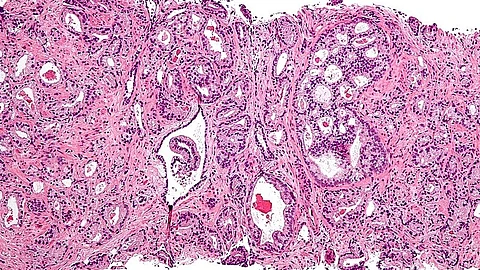

For the first time, researchers have discovered that prostate cancer can be killed by targeting a single enzyme, called PI5P4Kα. The findings, published recently in Science Advances, could help address the growing threat of treatment resistance in prostate cancer and could also lead to improved treatments for other cancers, such as those affecting the breast, skin, and pancreas.
“Understanding how prostate cancer develops resistance is critical for discovering new therapeutic strategies to delay or reverse the progression of prostate cancer,” says Emerling.
The prostate gland requires male sex hormones, known as androgens, to grow. Prostate cancer hijacks the androgen signaling machinery of the prostate in order to grow rapidly, which is why treatments that disrupt these pathways are effective.
“What’s remarkable is that we’ve found an enzyme that can be targeted against prostate cancer even in cases where treatments that lower hormones are ineffective or where resistance has developed,” says Emerling. “This could give us a whole new weapon against prostate cancer and other cancers that rely on this enzyme.”
The study was prompted by an observation made by Emerling’s colleagues at the University of Bern, led by co-senior author Mark A. Rubin. They noticed that patients with treatment-resistant prostate cancer had high levels of PI5P4Kα, suggesting that this protein played a role in the cancer’s ability to resist treatment and grow. Emerling’s team was then able to show—using multiple prostate cancer model systems—that inhibiting this enzyme could kill treatment-resistant prostate cancer.
“It was that initial observation from the patient data that really got us excited,” adds Emerling.
PI5P4Kα is part of a group of enzymes called PI5P4Ks that are involved in the metabolism of lipids, a type of molecule that includes fats, hormones, and many vitamins. While other areas of cancer metabolism have been extensively researched for decades, lipid metabolism has only recently emerged as a promising therapeutic avenue for cancer.
“Treatments that target lipid metabolism could be an unexplored treasure trove, and it’s something researchers are very interested in right now,” says Emerling. “We’re working to develop drugs to target this enzyme, and there are several companies out there developing their own drugs as well.”
Because of this interest, Emerling and her colleagues are optimistic about the future of this treatment approach.
She says, “There’s no drug yet, but I have high hopes that in the near future, we’ll have something in clinical trials. That would be amazing.” (GN/Newswise)
